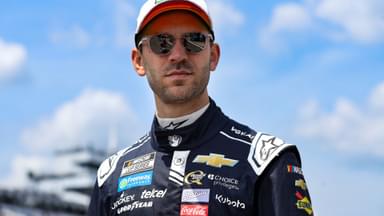While it may sound like a cliché, taking it one step at a time is the maxim young drivers follow to reach the pinnacle of NASCAR. However, drivers like Carson Hocevar have proven that there’s more than one way to get to the top: Via the Truck Series.
Advertisement
For many, including Corey Heim, the Truck Series still stands as the sport’s most authentic proving ground. It has long stood as NASCAR’s gateway to the national stage, bridging the gap between local short-track racing and the world of Xfinity and Cup.
Truck Series sets the stage for raw talent to catch attention. It is where future stars either make their mark or fade into the shadows. Heim, who’s had seat time across all three national divisions, believes that the trucks bear the closest resemblance to Cup cars, both in setup and in intensity, giving drivers the best chance to adapt before joining the sport’s elite ranks.
“I think the trucks are probably the most similar to Cup cars. I’ve driven all three. From a vehicle perspective, I think it definitely resonates the most when you’re trying to develop to be a hopeful Cup driver like myself. Xfinity is great, too,” the Tricon Garage driver said.
Heim didn’t downplay Xfinity’s value, though. “You’re comparing apples to oranges at the same time. You race a lot more on the Xfinity side. They’re a little tougher to drive at the end of the day. When you want to go Cup racing, you have to come to the truck,” he added.
The Truck Series regularly attracts Cup veterans who make select starts, giving young drivers a firsthand look at what it takes to compete at the sport’s highest level. That exposure sharpens the racecraft of aspiring drivers, tests their mental toughness, and offers a front-row education in aggression and precision.
With NASCAR’s latest rule change allowing Cup regulars with more than three years of experience to run up to 10 Xfinity and eight Truck races per season, the developmental ladder is about to get even steeper.
Beyond racing, the Truck Series functions as a full-scale apprenticeship, too. Development programs like NASCAR’s Drive for Diversity use it as a training ground for drivers, molding them as professional racers. Media relations, sponsorship dealings, and brand management, off-track responsibilities that can make or break a career, are taught just as heavily as lap times in the program.
Many teams in the Truck Series maintain direct ties to powerhouse Cup organizations. This gives drivers access to better equipment, elite coaching, and championship-level pit crews.
The national spotlight that comes with televised events and packed grandstands allows those young rising stars to showcase their skill before sponsors and team executives. For the 2025 NASCAR Craftsman Truck Champion, the logic is that the closer a driver can get to Cup-level competition early, the more refined and ready they’ll be when the call finally comes.







